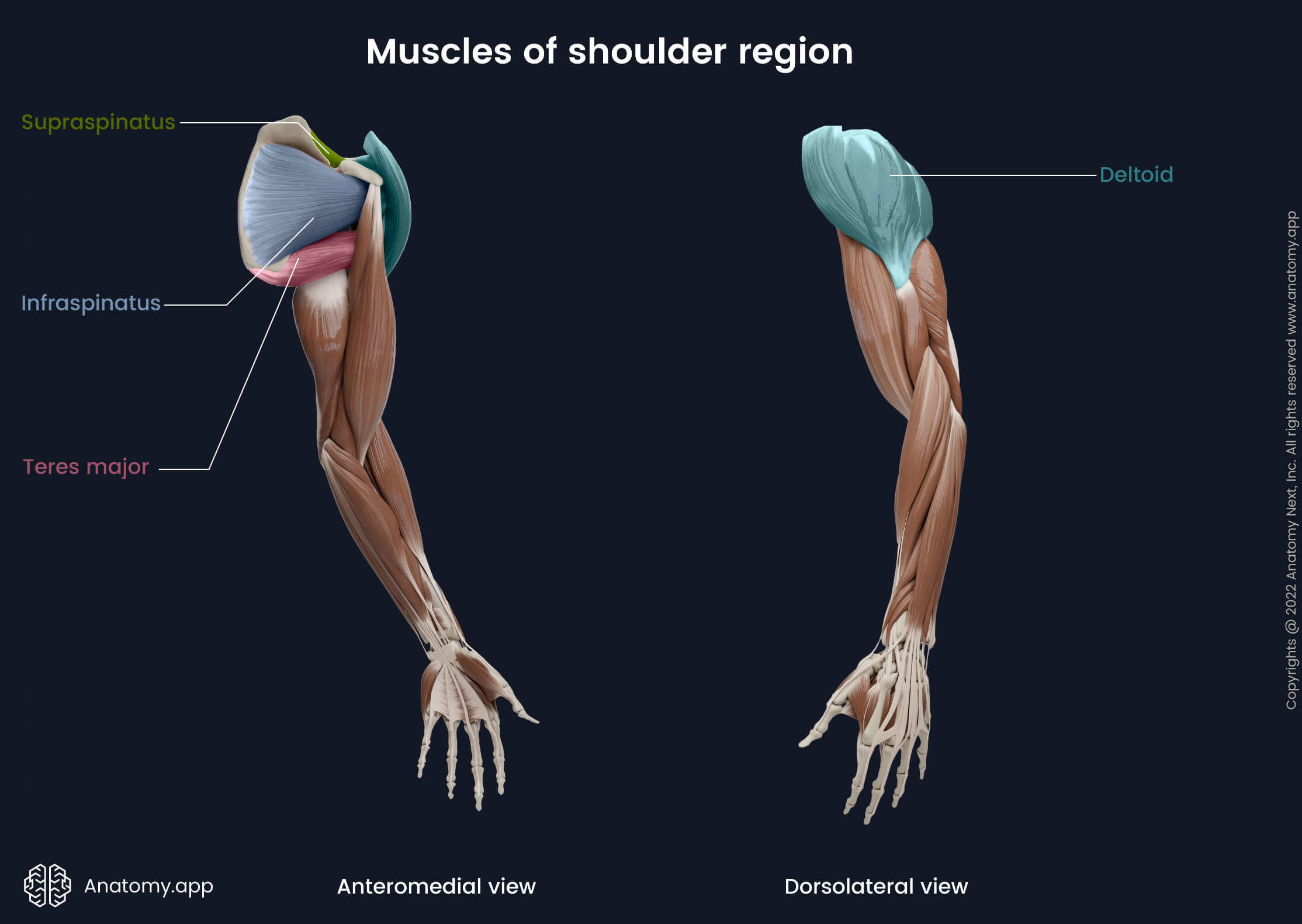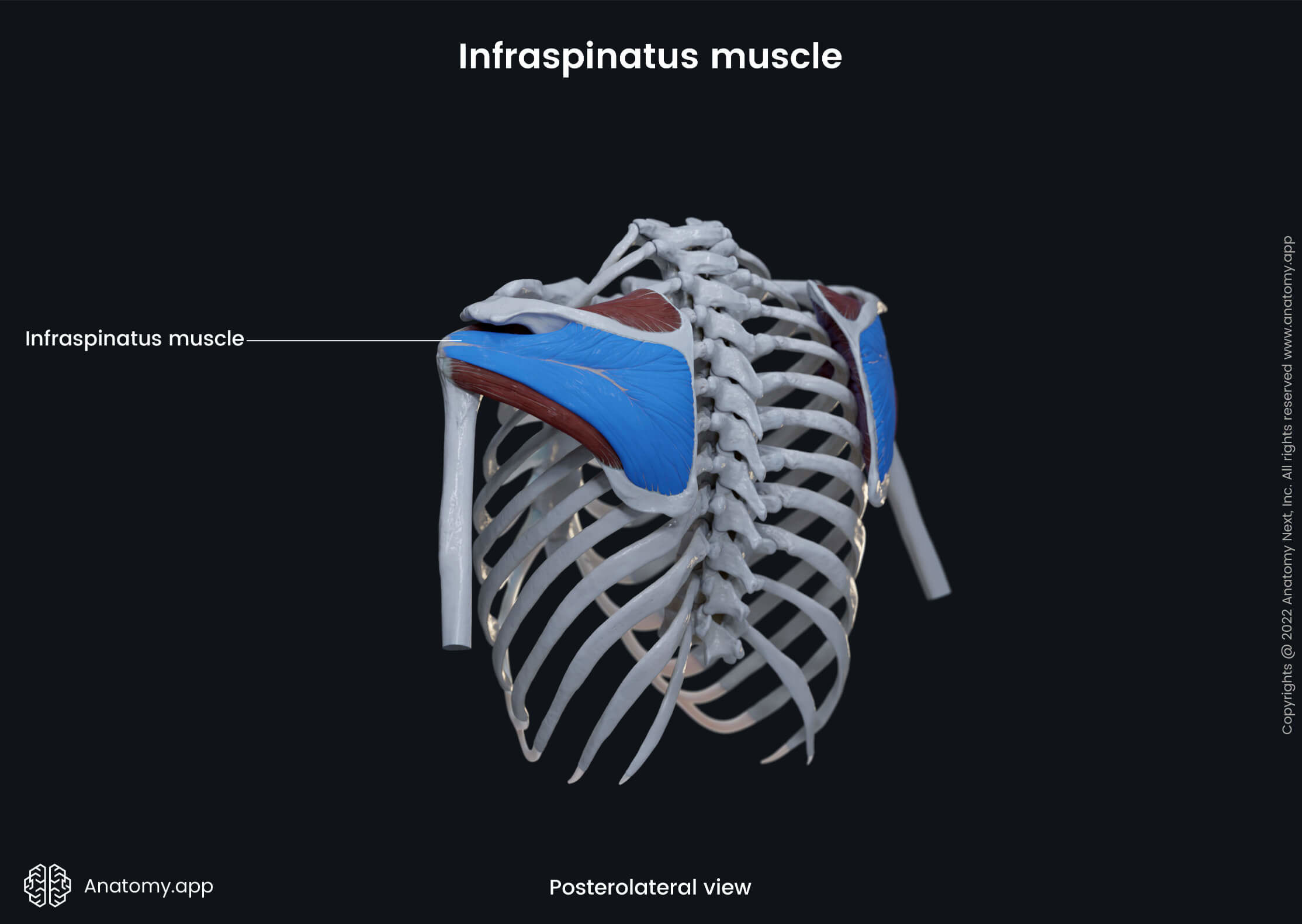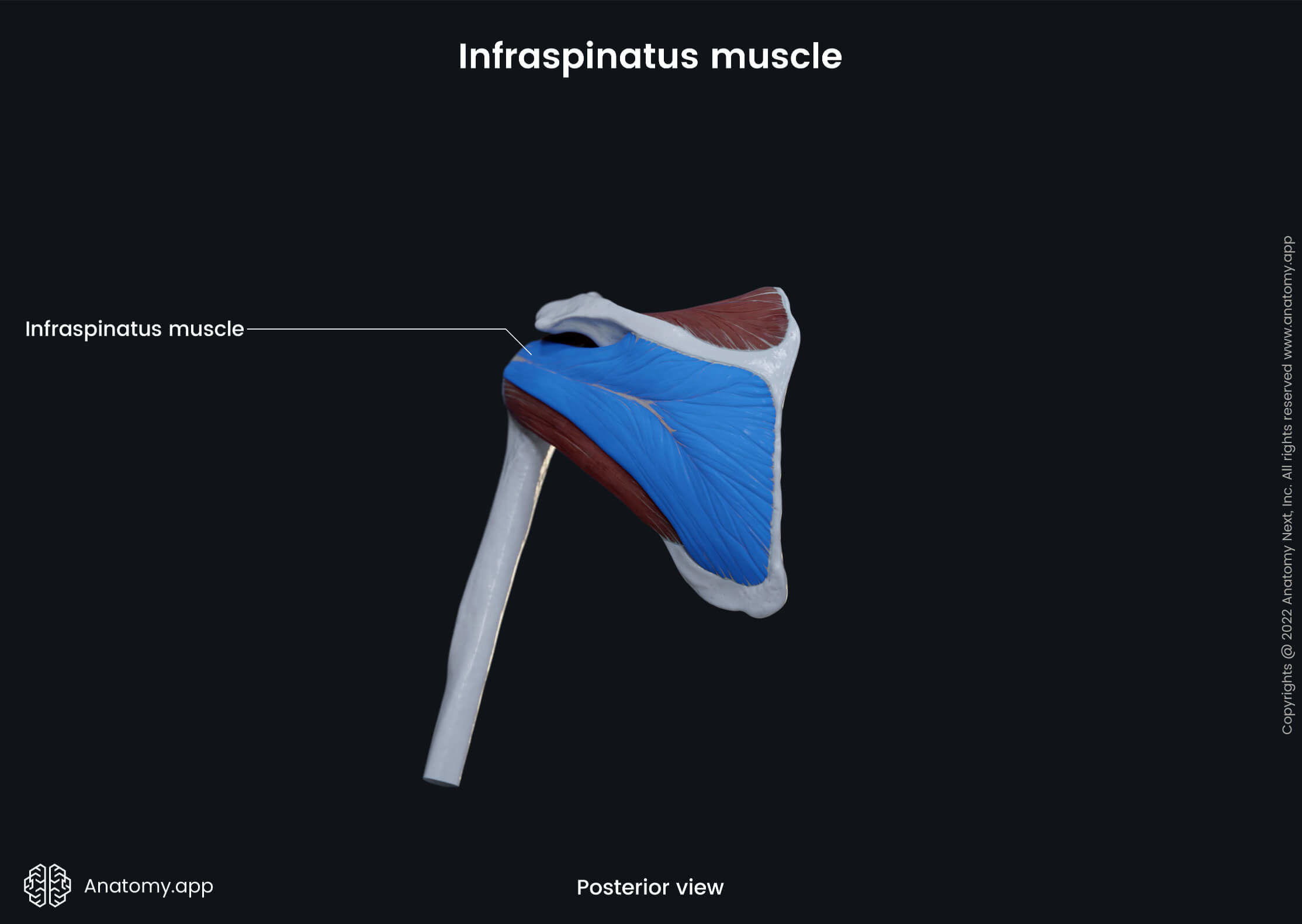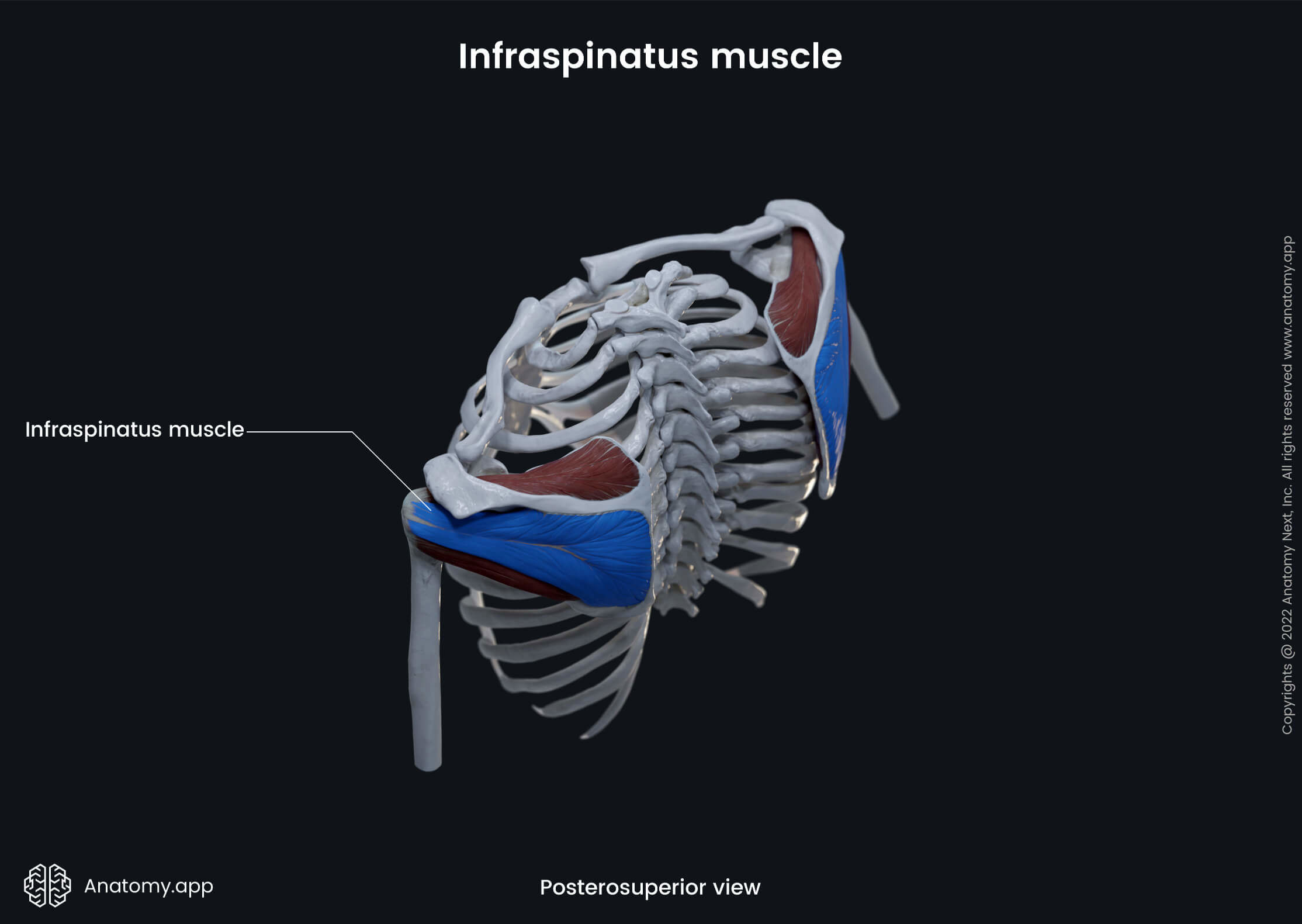- Anatomical terminology
- Skeletal system
- Joints
- Muscles
- Head muscles
- Neck muscles
- Muscles of upper limb
- Muscles of pectoral girdle
- Muscles of shoulder region
- Muscles of upper arm
- Muscles of forearm
- Muscles of hand
- Thoracic muscles
- Muscles of back
- Muscles of lower limb
- Heart
- Blood vessels
- Lymphatic system
- Nervous system
- Respiratory system
- Digestive system
- Urinary system
- Female reproductive system
- Male reproductive system
- Endocrine glands
- Eye
- Ear
Infraspinatus
The infraspinatus (Latin: musculus infraspinatus) is a flat triangular-shaped muscle of the upper limb. It extends between the scapula and humerus. As the infraspinatus acts at the shoulder joint, it belongs to the muscles of the shoulder girdle. Together with the supraspinatus, teres minor and subscapularis, the infraspinatus muscle is classified as one of the rotator cuff muscles that provide stability to the shoulder joint.
| Infraspinatus | |
| Origin | Infraspinous fossa of scapula |
| Insertion | Greater tubercle of humerus |
| Action | Shoulder joint stabilization, external rotation of arm |
| Innervation | Suprascapular nerve (C5, C6) |
| Blood supply | Suprascapular and circumflex scapular arteries |

Origin
The infraspinatus muscle originates from the infraspinous fossa located on the posterior surface of the scapula.

Insertion
The muscle fibers of the infraspinatus pass laterally from the infraspinous fossa and insert on the greater tubercle of the humerus.

Action
The infraspinatus muscle stabilizes the glenohumeral (shoulder) joint and provides external (lateral) rotation of the arm.

Innervation
The infraspinatus is innervated by the suprascapular nerve that arises from the fifth and sixth cervical (C5, C6) nerve roots of the brachial plexus.
Blood supply
The arterial blood supply to the infraspinatus muscle is primarily provided by the suprascapular and circumflex scapular arteries.